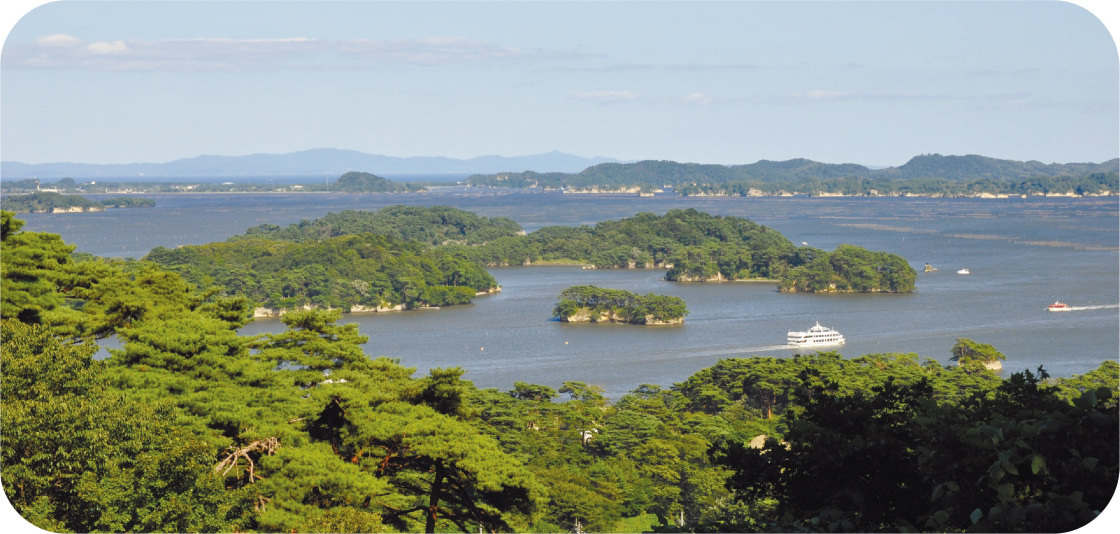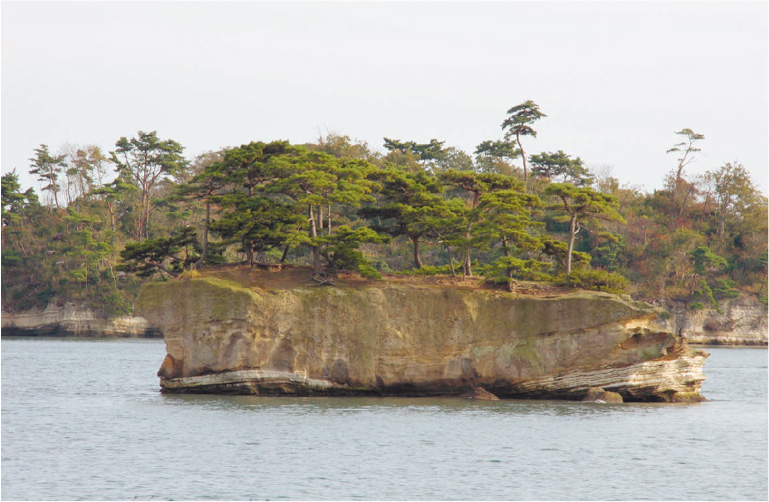Matsushima Bay has more than 230 islands of various sizes,* and is surrounded by mountains around 100 meters high. The beautiful scenery of many islands floating in the sea surrounded by mountains leaves an impression on visitors.
Matsushima Bay’s islands are composed of tuff, which is made of volcanic ash, and siltstone and sandstone, which are made of sand from the ocean floor. These rocks originate in the Neogene period, a geological period that spans from the birth of the earth to the present, and were formed between 23 million and 2.6 million years ago.
The shape of the islands we see today is the result of changes in sea level. The last glacial period of the geological Quaternary period (present period), when the earth was very cold, was about 19,000 years ago. At that time, the sea level was about 100 meters lower than it is now, and Matsushima Bay had more land than it does now. However, with subsequent global warming, the ice melted and the sea level rose, and about 6,000 years ago it was almost as high as it is today. As the sea level rose, the land became ocean, and more than 230 islands were born.
In addition, the seawater gradually eroded the islands made of tuff, siltstone, and sandstone, creating cliffs called "sea cliffs" which can be seen on most of the islands in Matsushima Bay.
In Matsushima Bay, 75% of the islands are less than 10 meters above sea level. If the sea level had risen higher in the warming, many of the islands would have been submerged. The only major river flowing into the bay is the Takagi River. The fact that there was not much sediment flowing from the river to the sea was also a factor that prevented the bay from being completed filled in. The beautiful scenery we can see today is the result of a miraculous balance of nature.
*The number of islands is based on the Miyagi Prefectural Government's 1981 "Prefectural Natural Park, Matsushima, Scientific Report" and the Miyagi Prefectural Board of Education's 2010 "Conservation and Management Plan for Matsushima, a Special Place of Scenic Beauty.”



